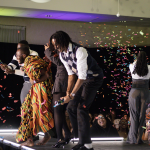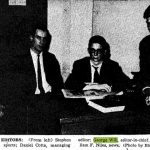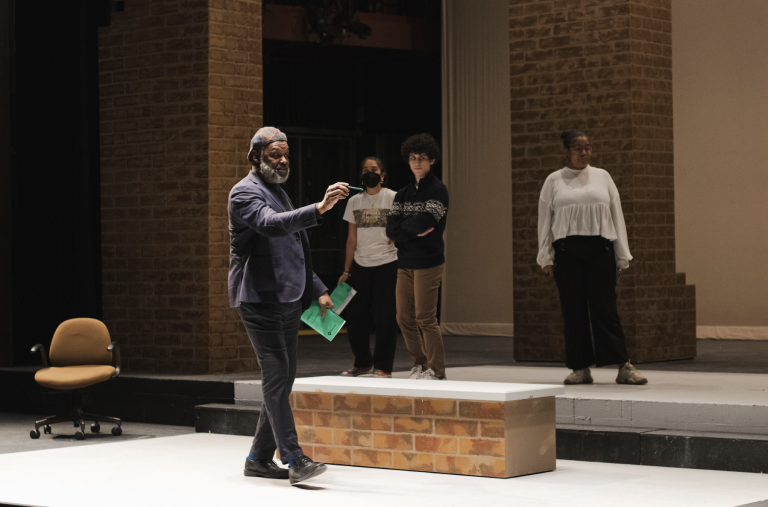GILLIAN REINHARD ’20
BEN GAMBUZZA ’20
MANAGING EDITORS
On Friday, Oct. 6th, the Hartford Symphony Orchestra will be hosting its opening concert of the season, featuring Beethoven’s Eroica and Kanno’s Revive. The concert, a juxtaposition of cultural backgrounds and eras in music, is a celebration of multiculturalism. In addition to the concert presented, the symphony will also be featuring a Naturalization Ceremony. Eleven Connecticut residents, including Hartford Symphony Orchestra Music Director Carolyn Kuan (a native of Taiwan), will take the oath to become American citizens.
In an interview with the Hartford Courant, Director Kuan spoke about her process of becoming an American citizen. “If you know anything about the immigration process, it’s very unpredictable.” Kuan recounted her experiences to the Courant, describing her immigration to the United States at age 14. The idea of combining Beethoven and Kanno, composers producing music from vastly different cultures, perfectly complements the naturalization of American citizens.
BEN GAMBUZZA ’20
MANAGING EDITORS
On Friday, Oct. 6th, the Hartford Symphony Orchestra will be hosting its opening concert of the season, featuring Beethoven’s Eroica and Kanno’s Revive. The concert, a juxtaposition of cultural backgrounds and eras in music, is a celebration of multiculturalism. In addition to the concert presented, the symphony will also be featuring a Naturalization Ceremony. Eleven Connecticut residents, including Hartford Symphony Orchestra Music Director Carolyn Kuan (a native of Taiwan), will take the oath to become American citizens.
In an interview with the Hartford Courant, Director Kuan spoke about her process of becoming an American citizen. “If you know anything about the immigration process, it’s very unpredictable.” Kuan recounted her experiences to the Courant, describing her immigration to the United States at age 14. The idea of combining Beethoven and Kanno, composers producing music from vastly different cultures, perfectly complements the naturalization of American citizens.
Hartford Symphony Orchestra Director of Development Ruth Sovronsky echoed Kuan’s thoughts in a statement to the Courant. “Hosting a Naturalization Ceremony at the Hartford Symphony Orchestra is a natural extension of what we believe: music, as the universal language, truly does build a better community, welcoming all regardless of background, borders, skin shade, religion or economics.”
The lesser known of the artists featured, Yoko Kanno, is an active Japanese composer. She is best known for her contribution to the scores of Japanese films and anime, but has also dabbled in genres such as jazz, electronic, and blues. Kanno’s Revive invokes traditional melodies from Japan. The piece features two instruments unfamiliar to Western audiences. The koto, a stringed-instrument, and the shakuhachi, a flute-like instrument, both contribute to the music’s unique sound.
The lesser known of the artists featured, Yoko Kanno, is an active Japanese composer. She is best known for her contribution to the scores of Japanese films and anime, but has also dabbled in genres such as jazz, electronic, and blues. Kanno’s Revive invokes traditional melodies from Japan. The piece features two instruments unfamiliar to Western audiences. The koto, a stringed-instrument, and the shakuhachi, a flute-like instrument, both contribute to the music’s unique sound.
Beethoven’s 3rd Symphony changed the symphonic form as we know it; it marks an important transition in composer’s artistic career. Before this symphony, Beethoven followed in the Classical tradition of Mozart and Haydn. However, he was living in the time of the French Revolution. Social tradition was being uprooted, and Beethoven knew his music also had to be. Indeed, the symphony is subtitled Eroica, “heroic”. Beethoven admired Napoleon’s democratic and anti-monarchical embodiment of the French Revolution, so at first the composer dedicated the symphony to him. Upon learning that Napoleon had declared himself emperor, Beethoven angrily scratched out his name from the manuscript. The Eroica Symphony marks the beginning of Beethoven’s “Middle Period”, which would continue until 1815. In this time, the composer solidified his position as the heroic artist.
The first movement begins with two loud chords played by the whole structure, then the theme is immediately introduced in the cellos. This already was a departure from
The first movement begins with two loud chords played by the whole structure, then the theme is immediately introduced in the cellos. This already was a departure from
the tradition of the symphony, which would usually start off with an introduction and gradually build up. Beethoven re- versed this tradition, shoving the key of the piece into our faces. The movement is a tour de force of musical experimentation. Beethoven employs extreme dynamic contrast between loud and soft, often startling the listener with huge unexpected chords. He experiments in accentuation of random notes, sometimes confusing the listener as to what time signature we are in and where beat 1 of each measure is. He also creates call and response between individual instruments, like flute and clarinet, or violin and cello, much like chamber music and his prized string quartets. In some places, the work almost becomes a concerto grosso, a form which Bartok would employ full force in his Concerto for Orchestra.
The second movement is a funeral march, starting off with a somber tone but keeping the heroic intensity of the first movement. In the last few measures, Beethoven’s takes the main theme and deconstructs it, much like he does in his string quartets.
The second movement is a funeral march, starting off with a somber tone but keeping the heroic intensity of the first movement. In the last few measures, Beethoven’s takes the main theme and deconstructs it, much like he does in his string quartets.
The end, then has a perden- dosi, “dying away”, quality.
The third movement is a Scherzo, or “musical joke”. The piece is quite funny, for throughout the whole movement Beethoven makes us wonder if we are in double or triple time. It is only clear in a few places but then quickly changes to confuse us. The joke is on the listener.
For the last movement, the “Finale”, Beethoven uses a theme previously used in his ballet The Creatures of Prometheus. This movement was written prior to the others and served as a prequel. One can see how Beethoven would identify with Prometheus, who brought fire to humankind. In this powerful and intense movement, Beethoven brings techniques to the musical world that would influence dozens of composers after him, especially Mendelssohn, Schubert, and Mahler.
Tickets for students are available for $10. Opening night begins 8pm at the Bushnell Center for Performing Arts in downtown Hartford.
The third movement is a Scherzo, or “musical joke”. The piece is quite funny, for throughout the whole movement Beethoven makes us wonder if we are in double or triple time. It is only clear in a few places but then quickly changes to confuse us. The joke is on the listener.
For the last movement, the “Finale”, Beethoven uses a theme previously used in his ballet The Creatures of Prometheus. This movement was written prior to the others and served as a prequel. One can see how Beethoven would identify with Prometheus, who brought fire to humankind. In this powerful and intense movement, Beethoven brings techniques to the musical world that would influence dozens of composers after him, especially Mendelssohn, Schubert, and Mahler.
Tickets for students are available for $10. Opening night begins 8pm at the Bushnell Center for Performing Arts in downtown Hartford.




+ There are no comments
Add yours